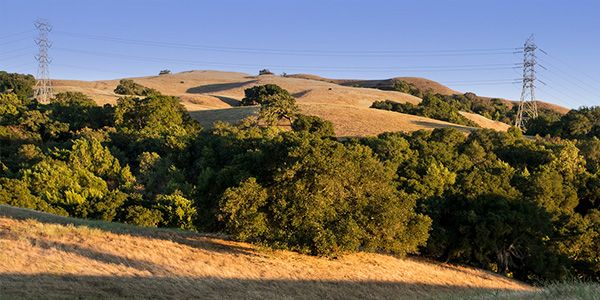By Hudson Sangree
CAISO moved closer this week to updating its transmission access charge (TAC) structure to include new rules about how to measure transmission usage.
Stakeholders discussed the final draft proposal Monday at CAISO headquarters in Folsom, Calif., with participants also joining by telephone.
The proposed rules are intended to more accurately allocate transmission costs based on current grid conditions to achieve greater efficiency and cost-effectiveness, the ISO contends.
In particular, the rules would change the current volumetric TAC to a hybrid one that uses historic peak demand data instead of forecasted data.
“It’s kind of a balance we’re trying to strike here,” Chris Devon, CAISO market and infrastructure policy developer, told stakeholders.
The volumetric-only approach is no longer appropriate because of a changing grid, most notably the rise of distributed generation and other distributed energy resources, the ISO and many stakeholders contend. The hybrid approach would help adjust for this new reality so that transmission owners can better recover the costs of building, maintaining and operating transmission facilities, proponents said.
“The proposed hybrid approach is an improvement over the current TAC structure,” the ISO said in its presentation Monday. “[It] captures both volumetric and peak demand functions and reliability benefits provided by the system.”
Planning for the revisions started in April 2017 and has included several stakeholder meetings. The initial straw proposal went through two revisions, with some of the more controversial proposals modified or rejected.
CAISO recently backed off a proposed provision that would have moved the point of measurement for transmission usage away from the end-use customer’s meter to the interface between the transmission and distribution systems to better reflect increased customer reliance on resources directly connected to the distribution network, such as rooftop solar.
“The ISO is willing to revisit the point-of-measurement issue — for purposes of prospectively allocating the costs of future transmission facilities — if state policymakers and regulatory authorities, after careful consideration of the merits and implementation issues, support retail rate changes that provide a transmission cost credit (i.e., relief from retail rate charges for certain new transmission facilities) to load-serving entities that have procured distributed generation resources,” the ISO wrote in the proposal.
The TAC plan still has a way to go before it could be implemented.
A final proposal will likely be submitted to the ISO Board of Governors in the first half of 2019, with board approval coming later next year.
It would then have to be submitted to FERC, with implementation occurring no sooner than 2021 or 2022, according to CAISO planners.
The grid operator previously developed a proposal to allocate transmission costs over an expanded balancing area if the ISO integrates new members from other areas of the West. (See CAISO Floats Latest Cost Allocation Plan for Expanded Balancing Area.) That proposal has been shelved until CAISO expands into other regions.


